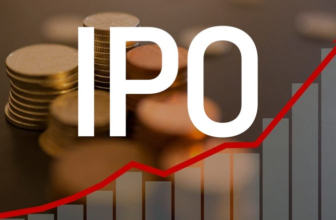
How HDFC Bank Dividends Compare to Peers and Industry Averages
HDFC Bank is one of the largest private sector banks in India with assets of over Rs. 11.89 trillion as of March 2020. The bank has a strong track record of consistent financial performance, having posted healthy growth in profits and maintaining strong asset quality over the years. As a large and established company, HDFC Bank has regularly rewarded its shareholders with dividend payments from its profits.

In this blog post, we will take a close look at HDFC Bank’s dividend payment history over the past 5 years. We will compare the dividend amounts, payout ratios and frequency to its peers like ICICI Bank, Axis Bank and Kotak Mahindra Bank. This will give us a sense of how HDFC Bank stacks up in terms of dividend payments compared to leading private banks in India. Finally, we will also benchmark HDFC Bank’s dividend metrics against overall industry averages for the banking sector in India. Analyzing the dividend payment track record and positioning is important for investors looking to evaluate HDFC Bank as a long-term investment.
HDFC Bank’s Dividend History
HDFC Bank has consistently paid dividends to its shareholders over the past decade barring a year or two. Here is an overview of HDFC Bank’s dividend per share, payout ratio and frequency of dividend payments over the past 5 fiscal years:
– FY 2019-20 – Dividend of Rs. 15 per share, payout ratio of 20.3% on current year profits. Paid annually.
– FY 2018-19 – Dividend of Rs. 15 per share, payout ratio of 20.7% on current year profits. Paid annually.
– FY 2017-18 – Dividend of Rs. 13 per share, payout ratio of 21.2% on current year profits. Paid annually.
– FY 2016-17 – No dividend payment for this fiscal year.
– FY 2015-16 – Dividend of Rs. 9.50 per share, payout ratio of 25.3% on current year profits. Paid annually.
As evident, barring FY17 where it skipped dividend, HDFC Bank has consistently paid annual dividends in the range of Rs. 9 to Rs. 15 per share over the past 5 years. The payout ratio has also remained relatively stable at around 20-25% of profits.
Comparison to Banking Peers
Here is how HDFC Bank’s dividend metrics compare to its peers – major private banks like ICICI Bank, Axis Bank and Kotak Mahindra Bank:
ICICI Bank
– FY20 dividend per share of Rs. 10, payout ratio of 19.7%
– FY19 dividend per share of Rs. 9, payout ratio of 19.8%
– Lower dividend per share than HDFC Bank but payout ratios inline
Axis Bank
– FY20 dividend per share of Rs. 5, payout ratio of 10.7%
– FY19 dividend per share of Rs. 5, payout ratio of 12.8%
– Lower dividend per share and payouts than HDFC Bank
Kotak Mahindra Bank
– FY20 dividend per share of Rs. 20, payout ratio of 26.3%
– FY19 dividend Rs. 20, payout ratio 20.4%
– Higher dividend per share than HDFC but lower payout ratio
HDFC Bank has paid a higher quantum of dividend per share compared to ICICI and Axis over the past 2 years. Its payout ratio is largely inline with ICICI but higher than Axis which has paid lower dividends. Kotak has paid a higher dividend per share than HDFC but its payout ratio is lower. Overall, HDFC seems to be inline or on the higher side compared to peers when it comes to dividend distributions.
Industry Averages
The average dividend payout ratio for the banking sector in India has been around 15-20% in the last 5 years. HDFC Bank’s payout is on the higher side compared to this industry average. For example, the banking industry average dividend payout ratio was 20.1% in FY18 and 17.8% in FY19. HDFC Bank had a higher payout of 21.2% in FY18 and 20.7% in FY19. This shows that HDFC Bank has been distributing higher proportion of its profits as dividends compared to the industry average.
In terms of dividend yields, the industry average banking dividend yield has been 1.5% – 2%. HDFC Bank’s trailing dividend yield was slightly lower at 1.2% as of FY20. So compared to the overall sector, HDFC offers higher payouts from profits but its yield is bit lower than industry benchmarks.
Factors Affecting HDFC Bank’s Dividends
Some of the key factors that can impact HDFC Bank’s ability to pay dividends include:
– Profit growth – Higher bottomline profits allow for larger dividend payouts
– Capital adequacy ratio – Regulatory requirements on capital cushion limit dividend payouts
– Deployment opportunities – Funds retained for growth initiatives limit dividends
– Regulatory landscape – RBI rules on dividend distribution can constrain payouts
HDFC Bank has benefitted from healthy profit growth of over 20% CAGR in last 5 years. Its capital adequacy at 18%+ is well above regulatory minimum. While the bank is growing fast, it has comfortably maintained capital ratios while paying dividends. Regulatory requirement of maintaining dividend payout ratio under 40% also provides headroom. Thus, the bank has leverage to sustain dividend payouts if strong earnings continue going forward.
Conclusion
HDFC Bank has an impressive track record of dividend payments with consistent annual dividends and payouts of 20-25% of profits. Compared to peers, the bank has paid higher dividends than Axis and ICICI in recent years. Its dividend payouts are also on the higher side compared to industry averages. With strong earnings growth, HDFC Bank has been able to maintain capital ratios while distributing dividends. For investors, the bank’s high and rising dividends make it an attractive proposition within the banking space.
Also read,
Exploring the Heart of Banking Excellence: Inside HDFC Bank’s Headquarters





